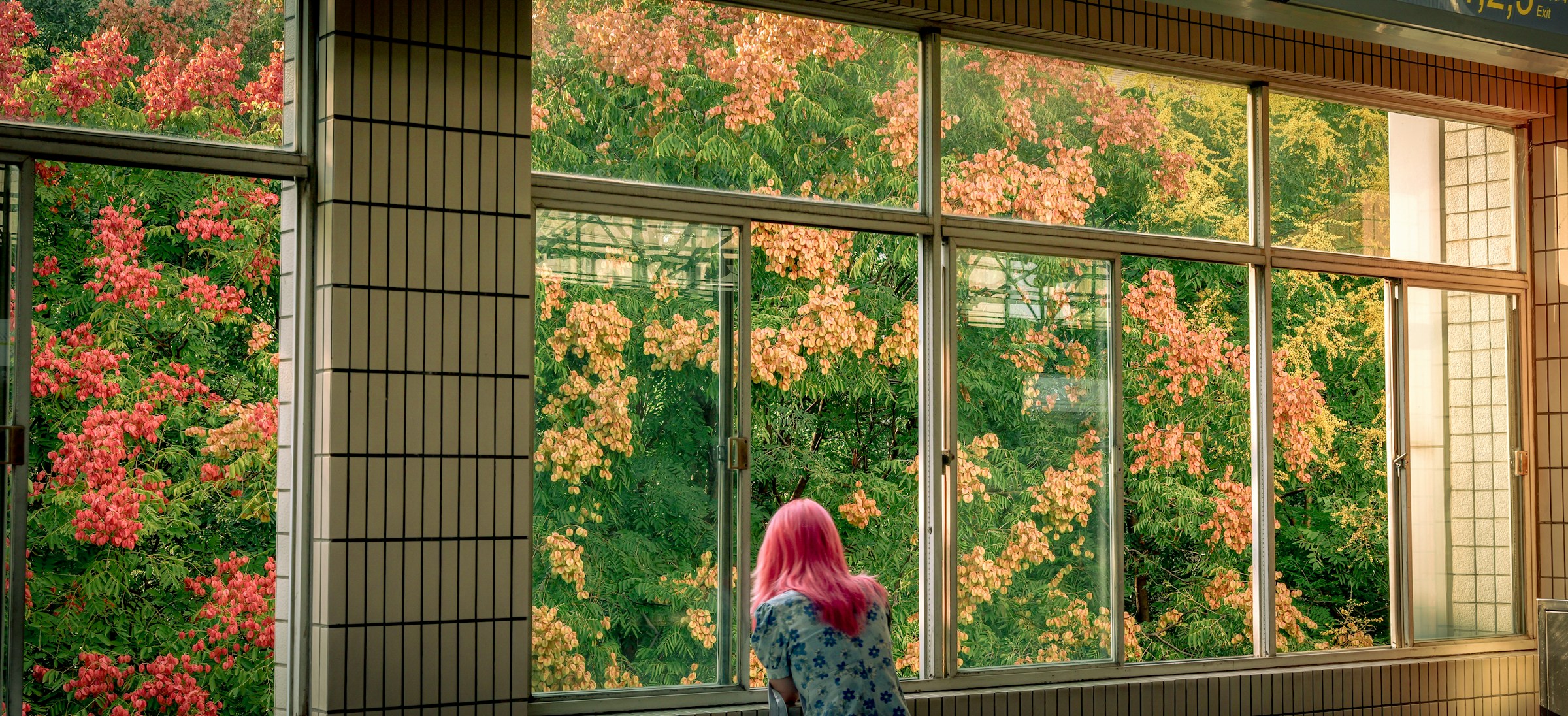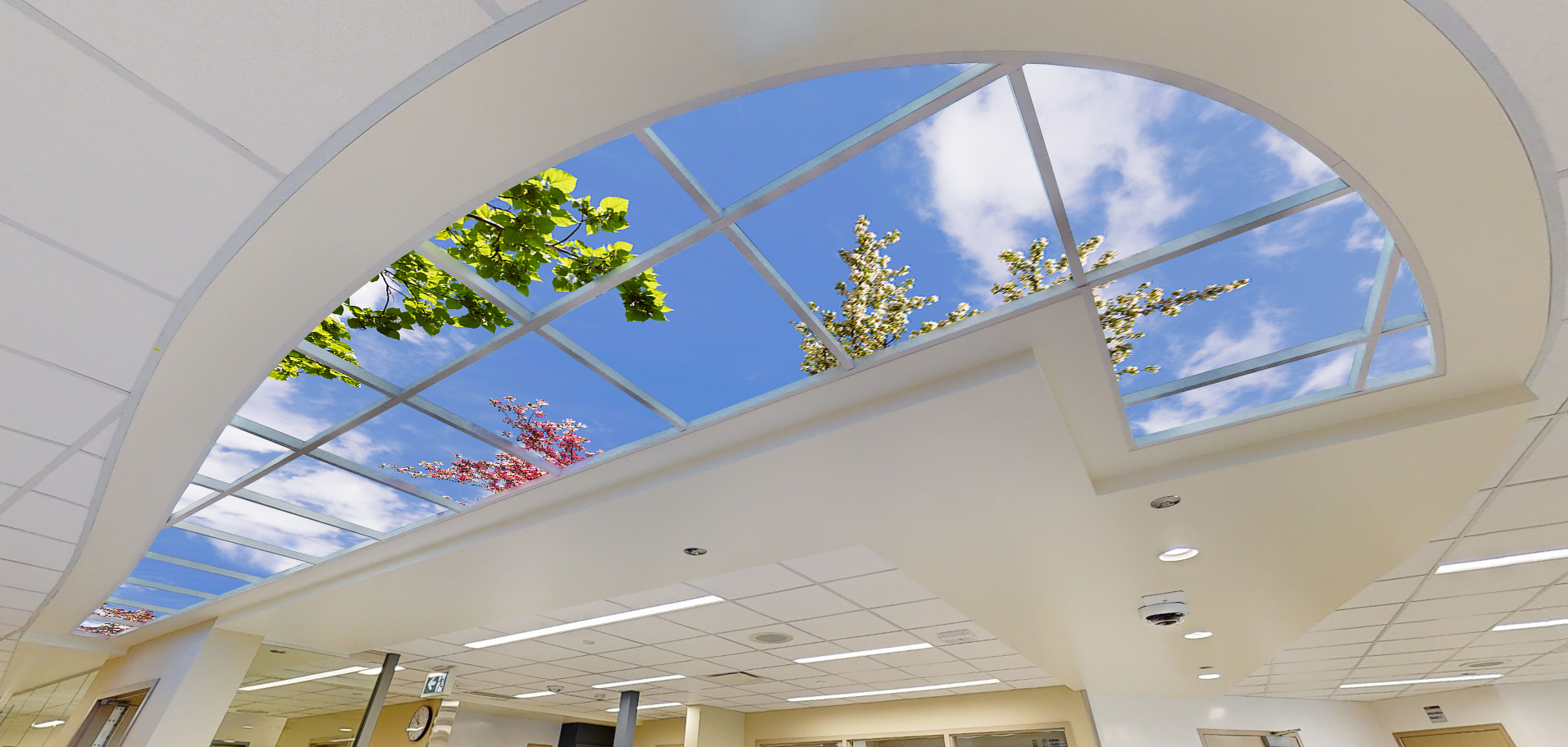Water’s Fluid Motion & Stress Reduction
A new study spearheaded by researchers at the Dept. of Human Centered Design at Cornell University set out to explore the sensory characteristics of waterscapes. The ad hoc team wanted to find out whether slow-moving or fast-moving bodies of water are more effective in mitigating anxiety in stressful environments. The researchers set out to analyze whether the level of arousal perceived in the visual and auditory patterns of water scenes played a significant role in their restorative potential.
But why should the motion of water have a therapeutic effect on our psycho-physiology? Well, our relationship to water is deeply intuitive and emotional—water means survival. For millennia, our ancestors chose to settle next to or nearby sources of fresh water. Humankind’s collective recognition of water’s multifaceted expressions and deep ties to life’s emergence is well captured in our mythologies and religions. Water’s ability to embody the full range of our emotions and thoughts is one of the reasons why it is also one of the primordial attributes in biophilic design.
In fact, given that “water is the supreme sculptor of the environment,”1 says Craig S. Campbell, Professor of Geography at Youngstown State University, it is closely associated with thriving ecosystems, biodiversity, sustenance, mobility and trade, as well as sociability and recreation. In Western Civilization, dating back to ancient Greece, Thales of Miletus, one of the most distinguished pre-Socratic philosophers, emphasized that “water is the principal, or the element, of all things.”
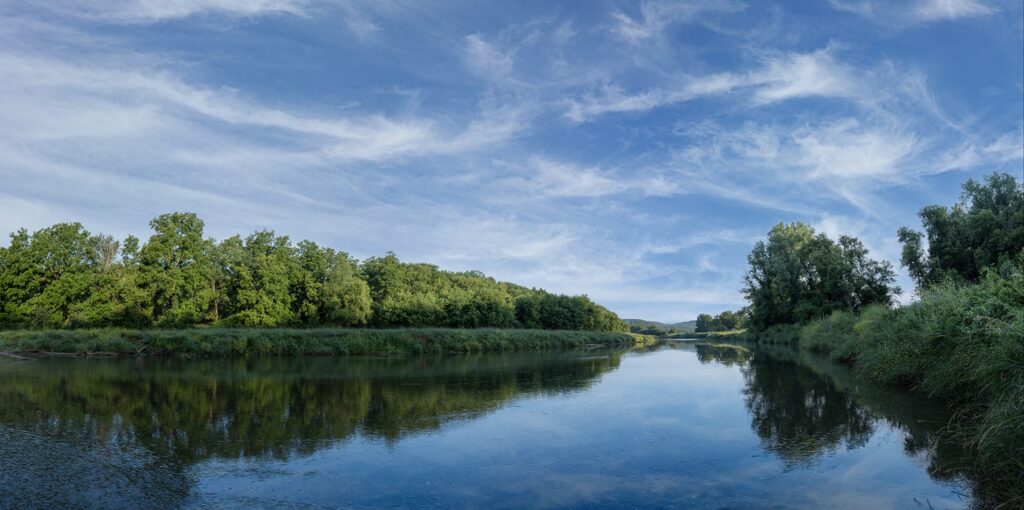
Oceanic bodies of water submerge more than two thirds of the surface of the Earth (71%) and our own microscopic development takes place in a fluid universe—floating in the amniotic liquid that cushions the fetus until it is born. When newborns begin an airborne existence, their nascent physiology is composed of up to 80% water.
Water’s remarkable physical plasticity is capable of embodying powerful swells capable of tossing the largest ships on the ocean, as well as atomize under the sun’s heat into transparent mists that ascend, coalesce, and drift across the skies as weightless clouds. And from the troposphere, these vaporous volumes reflect the most extravagant colors until a drop in the atmospheric pressure causes their condensation and swift descent.
Therefore, depending on latitude and longitude, cloud banks can fuel furious tropical depressions or materialize into impressive icebergs that pierce the surface of Arctic landscapes. Given water’s prodigious plasticity, waterscapes embody the full range of Earth’s diverse topography. At the same time, in water we see our innermost feelings, its luminous surface and silent depths infuse our imagination, immerse our memories in galvanizing experiences of nature, as well as drive ancient legends and cosmologies.
In this light, is it reasonable to expect that our physiology, in a controlled environment, would react in a different manner in the presence of fast-moving or slow-moving waterscapes, or is this sensory distillation a rather reductive dichotomy? Would our physiology not behave in a positive manner in either situation, alternating between periods where stimulating fluid motion is most alluring and periods where restful and languorous movement is most refreshing? Before we find out, let’s take a look at the different ways that scholars recognize the ways of water affect us.
Bodies of Water, Biophilic Design, and the Built Environment
Martin L. Mador, a polymath and scholar in environmental education, biophilic design, and conservation, composed a typology of nine values that identify the biophilic aspects of humankind’s psychic relationship to water. Among those that impact our psycho-physiology and social bonds, he highlighted water’s ability to draw out our deepest Humanistic values, recognizing water as the source of all living systems.
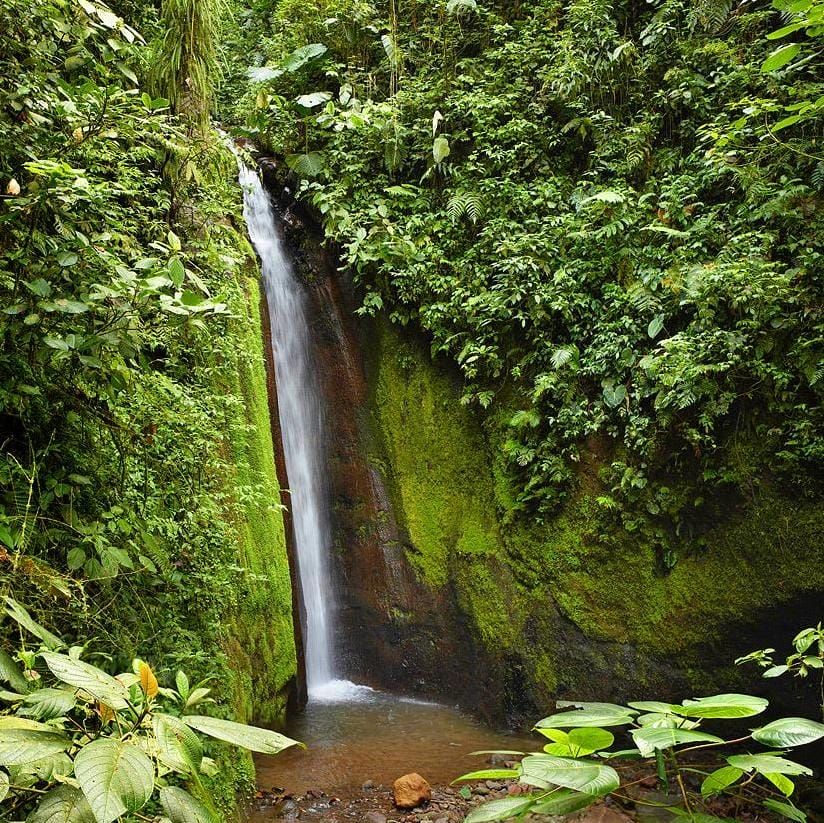
In the chapter he contributed in the landmark book he also co-edited with Stephen R. Kellert and Judith H. Heerwagen, Biophilic Design: The Theory, Science, and Practice of Brining Buildings to Life, Mador noted that waterscapes captivate and mold our sense of beauty (Aesthetics), inspire our sense for adventure and conquest such as the first maritime peoples were drawn to the open seas (Naturalistic), but water also holds a sacred role in a wide variety of meaningful religious and spiritual rituals (Symbolic).
And while Mador observed that water has no inherent persona—as a liquid it has no shape, it yields to the touch, and is readily shaped by its surroundings—it is also a protean force that suffuses its surroundings with its alchemy-like qualities. Despite having no color when viewed through a glass, water is vividly green, aqua, or grey-blue against the distant horizon line of numberless coastlines across the seven seas.
In his exposition, Mador highlights how pure water doesn’t even have a taste, yet it transmits the taste of any substance that it mingles with. He also notes how water can lack smell, yet as atmospheric humidity rises, moisture readily distributes the aromas of its surroundings.2 At the same time, Mador recognized that water had strong animistic traits that endow its chimeric presence with lifelike properties.
Water’s ability to embody the full range of kinetic motion, ranging from the raw power of crashing waves to the breathless quiver of single ripple—the visual, aural, and magical transformations of its liquid texture lend water an irresistible plasticity that sculptors, artists, and architects throughout the centuries have embraced to create the world’s most fabled water features. In today’s most travelled cities, visitors are sure to discover a wide variety of historic fountains, sculpted waterways, and sublime landscape architecture that incorporates water to achieve grandeur and timeless beauty.
However, given that our own psycho-physiology cycles through periods of activity and rest, would our attention not also alternate between the fast-moving thrills of falling water and the tranquil recollections that slow-moving waters, finding both physically engrossing and emotionally restorative?
Harnessing Technology to Bring Back Water’s Healing Attributes
In Healthcare Design

It is interesting to note that Cornell University’s study notes that “water has largely been omitted from healthcare design due to concerns of cost, maintenance, waterborne pathogens, and contamination.”3 The research team wrote that “existing research has not yet provided a design methodology to incorporate the healing effects of water without the potential diseases, contamination, and maintenance issues associated… [but that] given the current technological capabilities, the isolation of the auditory and visual sensory stimuli has the potential to re-introduce the healing benefits of water into healthcare design.”4
On this point, the healing attributes of what the Cornell team calls blue space, particularly in the use of digital displays to depict water scenes, has been studied and applied in healthcare settings with much success. Aquariums have long been recognized for their therapeutic value given that the smooth, undulating motion of underwater plants, corals, and fish effortlessly captivate our attention, which in turn lower stress and anxiety, blood pressure, and cortisol levels. Aquariums have also been found to offset depression and loneliness in eldercare residential settings.
In fact, studies on Animal Assisted Therapy (AAT) have shown that even an aquarium illusion using a wall-recessed Digital Cinema system installed like a credible view into an underwater environment was shown to reduce the perceived pain threshold of subjects exposed to 30, 20, and even 10 minutes of simply sitting before the virtual window and observing coral reefs or assorted fish species in their natural habitats.
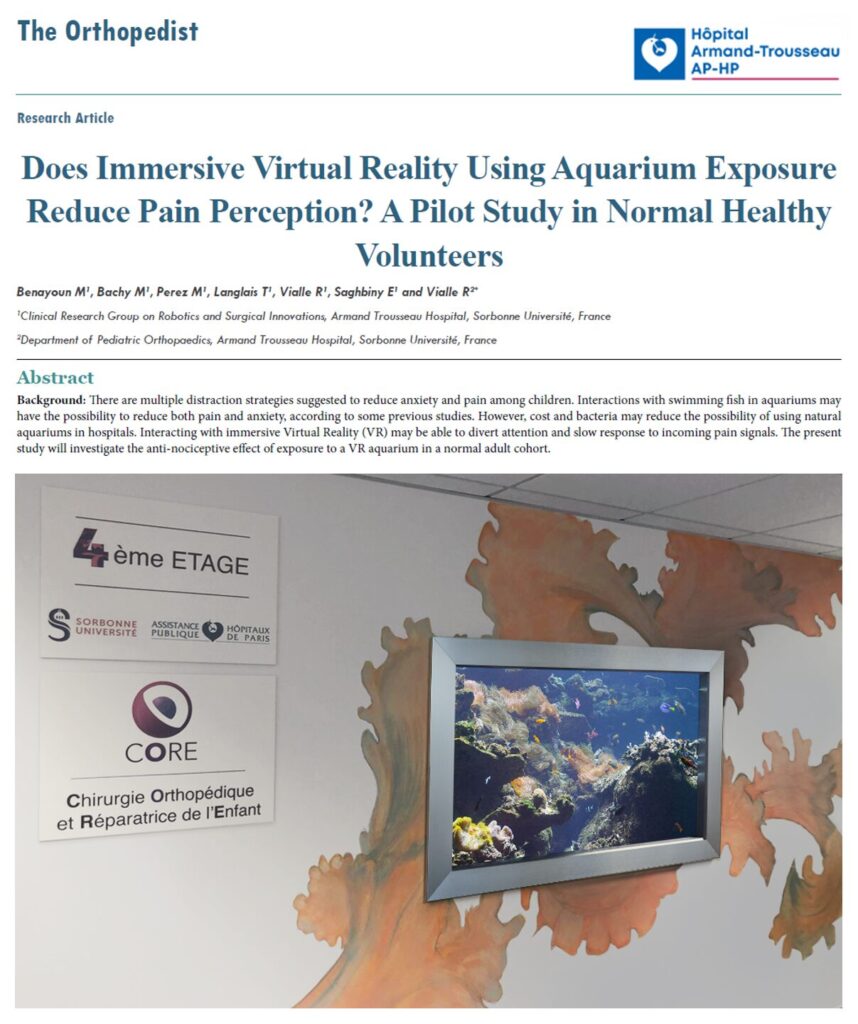
This pilot study carried out by the Armand Trousseau Hospital in Paris and published in the The Orthopedist Journal demonstrated the growing interest in deploying biophilic illusions of natureTM specifically featuring underwater environments as an evidence-based design (EBD) tool in Animal Assisted Interventions (AAI). These digital blue spaces address the Cornell University study’s concerns regarding water-born pathogen mitigation and the high maintenance costs of real aquariums in healthcare settings.
Memorable Waterscapes—Fast & Furious vs. Slow & Glorious
Water features lend art and architecture both vigor and subtlety of character, passion and inspiration, as well as ingrain their features with soulful remembrance and spiritual reflection. Water’s Protean ability to embody artistic intent is most recently showcased by Dezeen, one of the world’s most widely visited architecture, interiors, and design sites, which now co-sponsors a new competition called Shaping Water.
The competition seeks “striking and captivating designs for the public realm”5 involving a large-scale installation water feature using either still or flowing water for St. John’s Gate in a prominent historic location at the heart of Clerkenwell, London. Here again we see the dichotomy between dynamic and quiescent bodies of water that beg the question: which way will designers lean in creating a fountain or installation that embodies or complements the character of St. John’s Gate?
The winning design will be announced in May 2025.
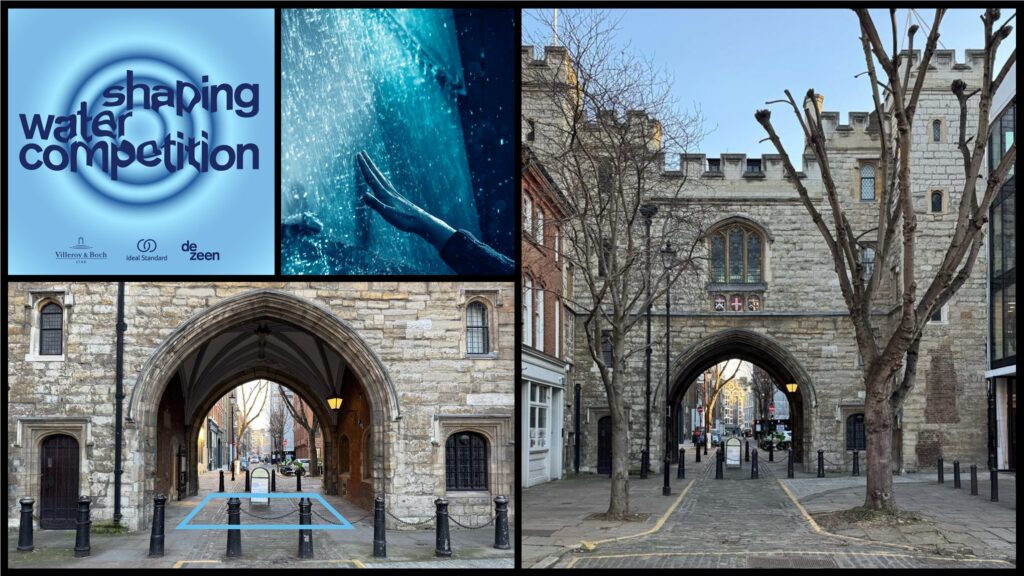
Waterscapes’ Restorative Impact
In the meantime, returning to Cornell University’s study, the team confirmed that the visual and aural representation of a water environment through digital means is effective in reducing stress. However, the research team did not find a significant therapeutic difference between fast-moving water (represented in the study by a waterfall scene) and slow-moving water (represented by a lake scene).
The pre and post emotional state of the 188 participants in the study was measured using the State Trait Anxiety Scale with a smaller subset of 26 participants also providing oral samples in order to record a salivary cortisol biomarker. And while the overall results demonstrated that “the utilization of digital blue space was effective in reducing stress,” the study results indicate that waterscapes are restorative regardless of the tenor of water’s movements, speed, or volume of activity.
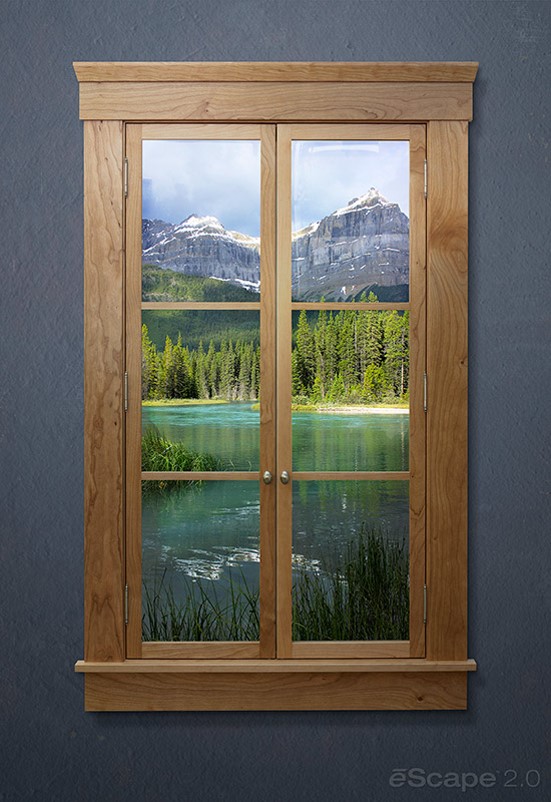
In fact, this confirms our own experience with eScape 2.0, Sky Factory’s own Digital Cinema Virtual Window that offers an engrossing panoramic illusion of open space that often features fast-moving bodies of water like waterfalls, crashing surf, and whitewater river scenes. However, just as often, customers intersperse beautiful scenes of slow-moving water like shimmering lakefronts, trickling creeks, and reflecting pools ensconced in the undisturbed vastness of nature.
Visit eScape 2.0’s full library of Digital Cinema waterscape scenes, including the latest Autumn Waterscapes—Rivers, Falls, and Ocean Views blog feature, that have made our 4K vertically-oriented landscapes and waterscapes the most popular blue space portal in healthcare environments. eScape’s full motion, image and audio Virtual Window helps designers create a convincing illusion of perceived proximity to wide open space and recess the perceived horizon line in confining interiors to help both patients and staff experience a multisensory connection to nature.
References
1 Kellert, Stephen R., Heerwagen, Judith H., and Martin L. Mador eds. Biophilic Design: The Theory, Practice, and Science of Bringing Buildings to Life, (John Wiley & Sons, Hoboken, NJ, 2008), 44.
2 Ibid, 44-45.
3 Lin CY, Shepley MM, Ong A. “Blue Space: Extracting the Sensory Characteristics of Waterscapes as a Potential Tool for Anxiety Mitigation.” HERD: Health Environments Research & Design Journal. 2024; 17(4):110-131. Retrieved on Feb. 20, 2025: https://journals.sagepub.com/doi/10.1177/19375867241276297
4 Ibid.
5 Amina, Amber. (2025, February 17) DeZeen, Villeroy & Boch, and Ideal Standard Launch Shaping Water Competition. DeZeen, Retrieved on Feb. 20, 2025:


